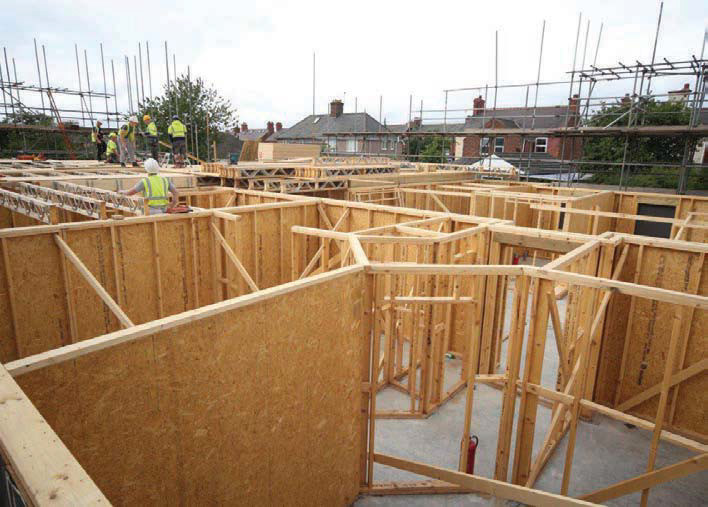Can panels help slow global warming?
21 December 2018Our guest expert in this issue is Dr Morwenna Spear of the BioComposites Centre in Bangor, North Wales, UK
There has been a lot of interest this year in timber in buildings and the aesthetic benefits and the beauty of the natural appearance of wood, especially Cross Laminated Timber (CLT). Barely a week goes by without another good example of innovation or sustainable construction delivered in the UK, using wood.
It would be true to say that people are getting interested in what timber can offer. There are benefits from the speed of delivery that modern methods of construction, such as timber frame or CLT, can offer. Then there is the construction skills shortage and the potential to re-train and re-skill with the assembly techniques that are needed for the timber frame and structural insulated panels (SIPs) construction systems to deliver long-needed housing. No wonder the timber frame sector has been reporting steady growth to the current 28% of housing starts in the UK!
People are also realising what we sometimes take for granted: wood is a sustainable resource. And I think in wood based panels we are more likely to forget this than in most other forest product sectors.
After all, OSB is hidden away in the wall structure and particleboard, or MDF, is hidden under a layer of whichever laminate is fashionable this season. It is easy to forget that these panel products are delivering a service, week in week out, in our homes, furniture and work spaces.
Something we also tend to forget is how much carbon these panel products are keeping out of the atmosphere. Forests sequester carbon dioxide when trees grow and lay down timber in their stems, roots and branches. There has been a lot of talk about the role of forests in doing this; and consideration of forest carbon pools. But there is also a pool of sequestered carbon in the timber and panels in our homes.
A recent study we have done at the BioComposites Centre showed that a detached timber framed house may contain around eight tonnes of wood (in structural elements alone), of which about two tonnes is wood based panels. In total this may be storing up to 13 tonnes of sequestered carbon. Once built, this timber framed house is likely to be standing for considerably longer than its 60-year design life. Let’s say it stands for 100 years before someone redevelops that area of town; that’s 100 years where that volume of CO2 is stored – and not in the atmosphere.
This is why the Intergovernmental Panel on Climate Change (IPCC) has begun to recognise the sequestered carbon in harvested wood products within its carbon calculations. It is also why standards committees have begun to recognise the need to report sequestered carbon for construction products.
The sequestered carbon needs to be reported separately to the embodied carbon of the products, for clarity. But there is a strong case for recognising carbon storage benefits associated with timber and wood based materials, alongside considering the carbon emissions of producing and using these materials.
Changes are also afoot in the construction sector. The UK’s Building Research Establishment Environmental Assessment Method (BREEAM) has been revised this year to include Life Cycle Analysis (LCA) in a more detailed form than previously, meaning that designers and engineers will become more conscious of embodied carbon.
The UK’s Royal Institution of Chartered Surveyors has issued guidance about whole building EPD calculations, again leading to greater awareness of the environmental profile of buildings. The product Environmental Product Declarations (EPDs), which manufacturers in the wood panel sector have produced, will be used in these calculations.
Now is a good time to remember that wood based panels form part of a building system which not only delivers lower carbon buildings, but which also provides a significant pool for sequestered carbon.
